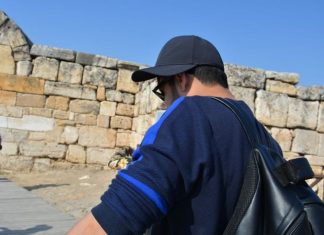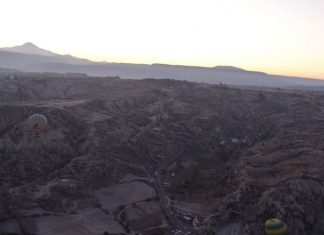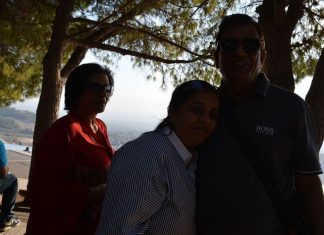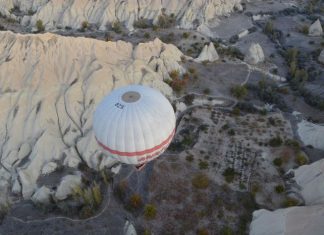Discovering Brusa
A Historic Ottoman Capital
A visit to Brusa, the once vibrant capital of the Ottoman Empire, requires a minimum of three days, including a full day to explore the city. Travelers need a Teskereh (refer to p. 32). The steamers connecting Constantinople and Mudania, Brusa’s port, vary in comfort, with some like the Bengazi and Adranit providing a better experience on Sundays, Tuesdays, and Fridays (returning on Sundays, Tuesdays, and Thursdays). However, passengers should bring their own provisions for the journey.
The departure time of the steamers is not fixed but usually falls between 8:30 AM and 10:30 PM. Through return tickets to Brusa are available through Messrs. Thos. Cook and Sons, 12 Bue Kabristan, Pera Treasures of Brusa.
The journey from Constantinople to Mudania takes approximately 4.5 to 5 hours on the screw steamers. From Mudania, a 1.75-hour train ride connects travelers to Brusa. Trains align with steamer
Discovering Brusa
A Historic Ottoman Capital
A visit to Brusa, the once vibrant capital of the Ottoman Empire, requires a minimum of three days, including a full day to explore the city. Travelers need a Teskereh (refer to p. 32). The steamers connecting Constantinople and Mudania, Brusa’s port, vary in comfort, with some like the Bengazi and Adranit providing a better experience on Sundays, Tuesdays, and Fridays (returning on Sundays, Tuesdays, and Thursdays). However, passengers should bring their own provisions for the journey.
The departure time of the steamers is not fixed but usually falls between 8:30 AM and 10:30 PM. Through return tickets to Brusa are available through Messrs. Thos. Cook and Sons, 12 Bue Kabristan, Pera Treasures of Brusa.
The journey from Constantinople to Mudania takes approximately 4.5 to 5 hours on the screw steamers. From Mudania, a 1.75-hour train ride connects travelers to Brusa. Trains align with steamer
Treasures of Brusa
Mosques, Tombs, and Citadel
Ulu Jami (The Big Mosque)
Ulu Jami, also known as The Big Mosque, stands as a testament to the contributions of three successive sultans—Murad I, Bayazid I, and Muhammad I. The pulpit, crafted by an Egyptian sculptor, rivals that of the Sinope mosque. Although the mosque’s current appearance is modern, its historical significance is undeniable. Admission for a party of up to three people costs 5 piastres (10d.).
Teshil Jami (The Green Mosque)
Built in 1418 by Muhammad I A Glimpse into Ottoman History, The Green Mosque is a prominent ornament in Brusa. Notable for its meticulous design, elegant structure, and exquisite marble-work, the mosque’s gate is a striking feature, adorned with the first chapter of the Koran and intricate floral designs. The elaborate inscription took three years to complete, costing Muhammad I 4000 ducats. The mosque derives its name from
A Glimpse into Ottoman History
Towards the end of the eleventh century, Brusa came under the control of the Seljuk Turks. However, they abandoned the city following the Crusaders’ capture of Nicsea in 1097 A.D. During Theodore Lascaris’s retreat to Brusa after the Latin capture of Constantinople, the town faced an unsuccessful siege in 1204 A.D. by around 100 French forces led by Pierre de Bracheux and Payen d’Orleans. In 1326, the Turks, under Orkhan I., successfully took Brusa after a ten-year siege, establishing it as the capital of their Empire. Brusa thrived under Turkish rule, attracting poets, tile-makers, and dervishes from various parts of Asia. Many churches and monasteries were transformed into mosques and mausoleums, while new charitable institutions, public buildings, and mosques were constructed. Notably, Brusa was where the formidable Janissaries were first organized during Osman’s reign.
Modern Brusa is the principal town in the Hudavendighiar province, governed by a Yal
Clothing and Accessories
Preserving Centuries of Style
Delving into the roots of Ottoman clothing culture, curator Mr. Esat Uluumay highlights the rich history embedded in dresses dating back to as much as 200 years. Despite the challenges of transportation and communication, these garments visually transport us to an era nearly 600 years ago, showcasing minimal changes in accessories, fabrics, and sewing techniques.
Adorning Every Detail
Uluumay Museum’s comprehensive collection goes beyond mere clothing, showcasing a vast array of accessories—from headgear to shoes, guns to socks—meticulously arranged based on the distinctive styles of each region Journey of Ottoman Clothing and Accessories. Human history reflects a consistent desire for embellishment and decoration, evident in the varied usage of accessories driven by the instinct to possess valuable items, seek admiration, avert natural disasters, ward off the
Journey of Ottoman Clothing and Accessories
Preserving Cultural Narratives
Clothing and accessories, witnesses to humanity’s evolving journey over centuries, unfold the tales of bygone eras. Serving as a visual narrative of the past, they provide a captivating story for future generations.
Pioneering the First Dress Museum in Turkey
The Uluumay Museum of Clothes and Accessories of the Ottoman People, Turkey’s inaugural dress museum, showcases samples of Turkish culture spanning from Central Asia to Anatolia. The curator, Mr. Esat Uluumay A Glimpse into Anatolia’s Hidden Gem, sheds light on the museum’s inception and purpose.
Inception and Inspiration
Mr. Esat Uluumay, inspired by his extensive travels with the Sword and Shield Folk Dance group, noticed the impact of modernization on local clothing during contests across Turkey. Observing the inadequacy of existing resources in portraying the authenticity of clo
A Glimpse into Anatolia’s Hidden Gem
Exploring the Enigmatic Metropolis
Perge boasts not only houses but also a one-of-a-kind Metropolis, unparalleled in Anatolia. A significant challenge remains unresolved: despite falling within the boundaries of a first-degree archaeological site, this area remains privately owned and undisclosed. Urgent action is needed to make this extraordinary site publicly accessible.
Diverse Tombs Tell Tales
Within this archaeological marvel, diverse tombs narrate unique stories. Ranging from podium tombs to those crafted from local stones, marble sourced from Afyon province Clothing and Accessories, engraved rock tombs, and brick-built tombs, a striking feature is the presence of magnificent mausoleums. These two-story structures house well-preserved compartments in the lower level, each containing a tomb. Additional, simpler tombs in the front courtyard of the burial chamber have revealed 18 skeletons in one and four in the ot
HORSES OF KARS
Preserving Heritage Homes
Architectural Charm in the City Center
The distinctive feature of Kars’ old houses, located in the city center, is their composition of multiple buildings surrounding a courtyard. Noteworthy structures such as the Government Mansion, utilized in the early years of the Republic, and primary schools still stand today. While some old houses remain in good condition, others await restoration, having hosted events like balls and theater plays since the Republic’s inception Read More about THE SILK ROAD. Preserving these historical buildings is vital for passing on their legacy to future generations.
AGRICULTURE AND TOURISM
Kars’ Dual Growth Engine
Cultivating Tourism and Agriculture
Kars’ progress hinges on the synergy between tourism and agriculture. Yusuf I§ik, General Manager of Himalaya Tourism, underscores Kars’ tourism potential, citing its rich
BORLUK FARM
Crafting Organic Gruyere in Kars
Gruyere’s Tale An Organic Delight
Gruyere, a specialty of the Caucasian countries, finds its organic roots on the high plateaus of Kars, making it a crucial product for the region. Giiven Yildirimturk, the proprietor of Borluk Farm, shares the story behind their annually produced gruyere, drawing inspiration from Holland and Switzerland.
Exploring Gruyere’s History
Q: Can you shed light on the history of gruyere Read More about HORSES OF KARS?
Giiven Yildirimturk: Gruyere was first crafted in 1936 at Kars Dogulu Farm. Unfortunately, this exquisite cheese is not well-promoted. The fully organic gruyere of Kars stands out as a product exclusive to the high plateaus of the region, cherished worldwide.
Borluk Farm: A Natural Haven
Q: Could you provide information about the farm?
Guven Yildirimturk: Situated naturally, our farm is located 10 km from Kars
THE SILK ROAD
Bridging East and West
Exploring the Ancient Trade Routes
The Silk Road, originating in China and weaving through Anatolia to finally extend into Europe, has served as a vital connection, uniting diverse cultures and races across Middle Asia to Europe for millennia.
Renovation for Tourism A Silk Road Initiative
Approximately 1100 inns and caravanserais along the Silk Road in Turkey are set to undergo renovation for tourism purposes. The “Silk Road Project,” spearheaded by the Ministry of Culture and Tourism of the Republic of Turkey, aims to breathe new life into these historical sites Read More about BORLUK FARM.
Historical Significance of Silk Trade
Silk trade has held immense significance for numerous nations throughout history. The trade of silk and spices from the Far East played a crucial role in international relations, contributing to the rise of the Eastern world. The Silk Road, evolvi












